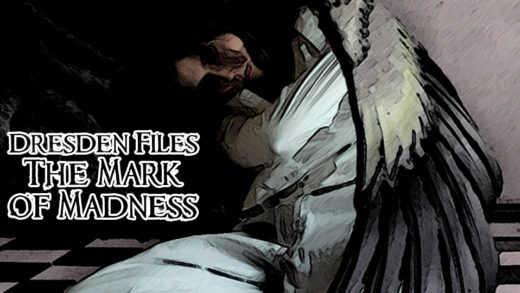In the last post of Characters vs Nature, I briefly discussed the little things. Another nature hazard that’s often overlooked (but almost always around) is plant life. We can’t survive without it, but sometimes we can’t survive with it. Like other Versus Nature themes, these issues are not genre specific and can be used to add ambiance to an already existing adventure or, sometimes, as a session in and of themselves.
Pollen
I used pollen as a challenge for the PCs in my Bulldogs! adventure, A Tiny Problem. In that adventure the alien pollen’s dangers were exacerbated and exaggerated beyond most normal domains of adventure, but the issues with pollen at a smaller, domestic, level are still present. In certain climates and areas, a fog of pollen presents the same issues that a dust or sand storm does—decreasing visibility and clogging small openings (which can affect gears, air vents, etc.). Pollen, even in smaller amounts, also has a potential negative affect on characters: allergies. Characters fighting an allergy can be plagued by multiple symptoms like watery eyes, sneezing attacks, headaches, and trouble breathing. Any one of these symptoms can turn the right moment wrong for a character. (For GMs bundling these nature troubles together, pollen can be a prevalent issue following a rainstorm.)
Poison, Irritants, and Hallucinogens
Once pollen has spread and a plant has germinated, it can still prove to be a problem for characters. Many plants can cause allergic reactions, hallucinations, or act as poisons on contact with skin and/or if ingested. The effects of these issues aren’t always immediate; for example, poison ivy can take up to a week after initial exposure before a rash appears and any sensitivity to the urushiol flares up (subsequent exposures often present themselves after a few hours, but still aren’t immediate). In this way, sneaky GMs can have players make constitution/fortification/etc. rolls long in advance of their characters suddenly experience symptoms for their exposure. …If making these toxicity defense rolls directly after ingestion, however, it might be a bit of a tip-off to players and can lead into meta-gaming territory.
Thorns, Spines, and Spiny Seedpods
Dangerous plant life with usually more immediately noticeable effects for characters include those with dagger-like outgrowths, sharp edges, or that leave behind spiny seedpods. Often, these plants do little more than leave superficial cuts—though even a little blood can attract greater predators or nuisances. Sharp ends don’t always have to break skin to be dangerous, though. Clothing and bags can be structurally weakened, sometimes without the carrier noticing. Spiny seedpods, or burrs, may even go unnoticed until undressing or reaching for something on one’s person.
Overgrowth
Overgrowth is probably most often used in games to increase travel-time or dissuade players from leaving a specific path. Overgrowth can also cause structural damage to buildings and caverns, causing sudden and unexpected collapse. (I know, I brought up sudden collapse when discussing termites in the last Versus Nature column. I have my themes.) It can also hide or block passageways. Plant overgrowth can also be combined with thorns or irritants, making a trek a figurative minefield for characters.
Plants. They can be the enemy. Especially giant Venus Man-Traps.


Recent Comments